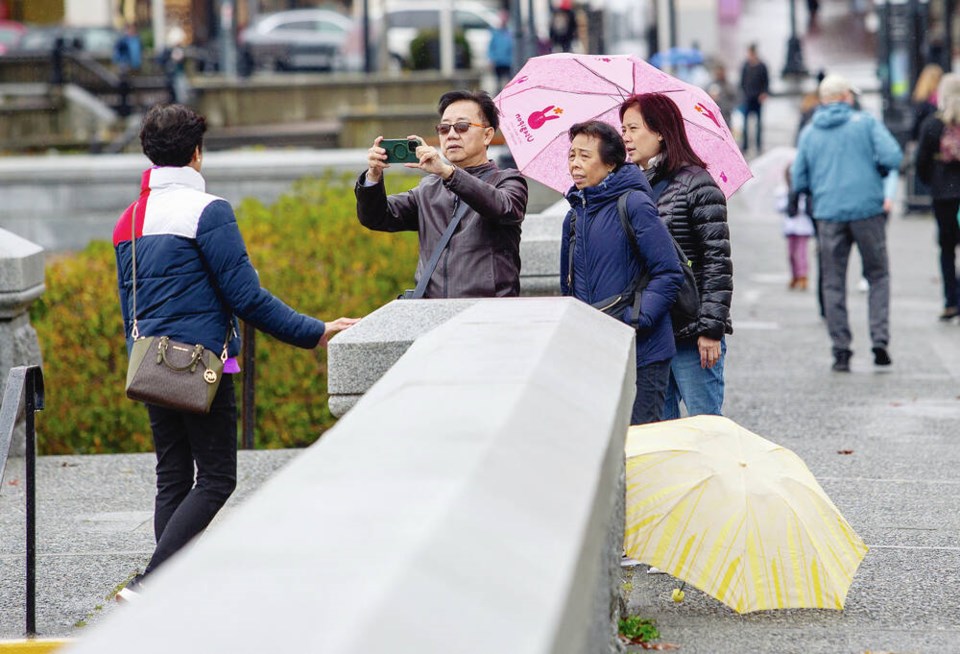A new Greater Victoria tourism study says the sector has rebounded from the downturn due to the pandemic to retain its place as one of the region’s economic foundations.
The 4.9 million visitors who arrived in the capital region last year helped drive the tourism sector’s $3.5 billion in economic outputs (goods and services produced in the sector in 2023). Tourism is responsible for 15,310 direct jobs, said the October report by InterVISTAS, using Statistics Canada data, for Destination Greater Victoria.
All types of travellers spent a combined total of $1.9 billion last year, the report said.
“The visitor economy remains a vital economic driver for our region,” Paul Nursey, Destination Greater Victoria chief executive, said.
It “not only supports businesses and creates jobs, but also enriches our community and enhances the quality of life for all residents,” he said.
The report was released ahead of Tuesday’s Destination Greater Victoria event announcing its 10-year master plan for the tourism industry.
A total of 3.7 million 91原创s travelled to the capital region, spending almost $1.2 billion, in 2023, InterVISTAS said.
American visitors have always been a key market for tourism in the capital region. The 936,500 U.S. travellers to Greater Victoria last year spent $488 million.
Another 352,000 visitors came here from overseas and put $270 million into the local economy.
Overnight visitors represented slightly more than 2.8 million visits and $1.7 billion in spending. The average amount spent per person is about $610, the report said.
These overnight travellers are prized by the tourism sector because they have a broader and larger economic impact. By staying longer, they spend more by going to hotels and restaurants, and taking in a variety of local activities and attractions.
Last year saw 1.3 million same-day visitors, not including cruise ship passengers, accounting for a total of $125 million in expenditures, with an average expenditure of slightly more than $90 per person. Their time is often spent shopping or dining, the report said.
The study said that passengers and crews from cruise ships account f0r $90 million in spending. Notably, per-person spending for paying passengers is $100, while crew members average about $140 per person, according to the report.
Passengers visit downtown, shop, go to restaurants, hire sight-seeing drivers, visit Fisherman’s Wharf, rent bicycles and ride buses to local attractions.
Cruise lines spent about $124 million. When the big ships pull in, they hire local services and suppliers, which can include ship repair and waste collection.
Tourism not only bolsters the economy but also makes significant contributions to government revenues, Destination Greater Victoria said in a statement.
“Of the total tax contributions of $510 million, $30 million went to municipal taxes, $248 million to provincial taxes and $232 million to federal taxes.”
The visitor economy enhances the quality of life for local residents by “supporting a vibrant cultural scene, funding community projects and maintaining the natural beauty of the region,” it said.
“Every visitor counts, and the collective impact of millions of visitors contributes to the well-being and prosperity of Greater Victoria,” the organization said.



